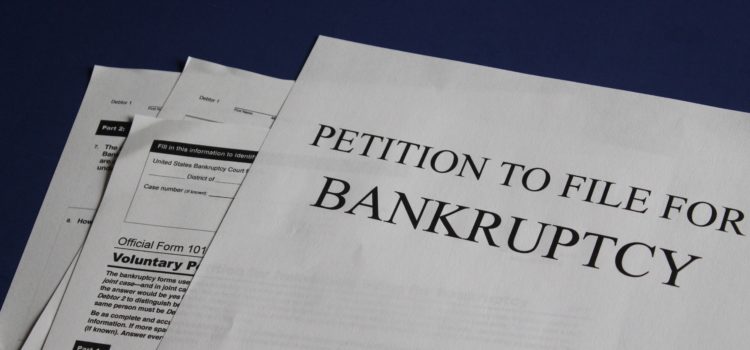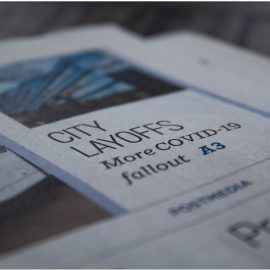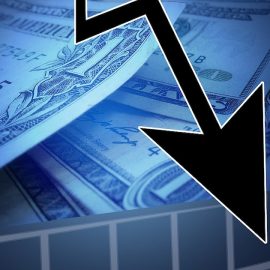

This article is an excerpt from the Shortform summary of "The Smartest Guys in the Room" by Bethany McLean and Peter Elkind. Shortform has the world's best summaries of books you should be reading.
Like this article? Sign up for a free trial here .
Was was the Enron bankruptcy case? How did Enron become bankrupt, and what happened when Enron filed for bankruptcy?
Enron’s bankruptcy claim occurred in 2001, after years of unethical and convoluted business and accounting practices. The Enron bankruptcy scandal was one of the biggest moments of corporate and financial history.
Enron’s Final Moments
The nightmare scenario is more or less what happened at the end of 2001. Over a series of months, Enron collapsed, one step after another. Still, Enron’s bankruptcy came as a shock to many.
Internal rumors began circulating about issues at Enron.
- Accountants looking into the SPE deals realized that the falling value of assets in the SPEs, along with the falling Enron stock price, were going to become difficult to pay off. “It’s a bit like robbing the bank in one year and trying to pay it back 2 years later.”
- It was known that EES’s losses were being hidden in wholesale. In an employee letter: “This is common knowledge…and is actually joked about.”
The SPE Raptor deals ran into trouble.
- The Raptor deals became underwater by 9 figures, especially in the market hit after September 11.
- Andersen auditors realized they made an accounting error – Raptor restructuring had been booked as a boost in shareholder equity and needed to be reversed, costing equity $1.2 billion.
- This would be recorded as a simple equity reduction, rather than a restatement, which would admit mistakes and trigger SEC inquiries and lawsuits.
- COO Whalley argued to take the hit and clean up. They felt Enron would recover after cleaning up.
- To make the accounting look more favorable, Enron wanted the correction as a nonrecurring charge. Since this was originally booked as operating profit, this was grossly inappropriate. Andersen put up a fight, but ultimately Enron forced their hand.
On Oct 16 2001, Enron shared its third quarter report. They were sanguine as usual: “recurring Q3 earnings of $.03 per diluted share; reports nonrecurring charges of $1.01 billion…reaffirms recurring estimates.”
- The Wall Street Journal attacked the nature of the writedowns in a series of articles.
- Prompted by these articles, the SEC began an informal inquiry into Enron’s dealings with Fastow’s partnerships. Announcement of this sank the stock 20% to $20.65
- Oct 17: Moody’s announced it was placing Enron’s debt on review for a possible downgrade. It focused on 3 issues: negative operating cashflow, slow progress in asset sales, and more writeoffs involving Dabhol, Azurix, and broadband.
- Oct 23: Andy Fastow was interviewed about his income from the LJM deals. The next day, Whalley fired him.
On Oct 24, 2001, Enron’s bankruptcy continued when it was unable to roll its “commercial paper,” short-term loans used for day-to-day expenses. It had no operating cash.
- It desperately tried to make deals for cash – like opening up its books – but no one was willing to bite. It had to draw down $3 billion in backup credit lines.
- The last-ditch solution was to sell their pipelines, the only steady cash generator Enron had left.
- Enron’s trading also required credit to survive – trading partners would start demanding cash collateral.
Through this turmoil, Arthur Andersen began realizing how bad their work with Enron would make them look.
- Andersen had previously paid fines for accounting fraud at Waste Management – it had a cease-and-desist from the SEC from misconduct. In that case, Andersen’s records had provided regulators with plenty of proof – it wanted to avoid that mistake again.
- There was a shredding frenzy in both Enron and Arthur Andersen (following normal “document retention procedures”) until an official subpoena on Oct 26 forced them to stop.
- Andersen also saw major mistakes in Enron’s SPEs accounting, with the 3% not being truly independent capital. This meant the deals had to go back on Enron’s books.
Once dancing to Enron’s tune, the bankers realized their new leverage over Enron and took advantage.
- Beyond its credit line, Enron needed an extra $2 billion in cash. Banks refused to let it borrow the loans unsecured like before – now it demanded the only collateral remaining – the pipeline systems – and exclusive business with Enron for the next 18 months.
In early November, a possible savior came in a possible merger with smaller energy company Dynegy.
- For years, Enron took pot shots at Dynegy for being a tiny wannabe and threatened to steamroll it in every business line. The Dynegy CEO now saw a chance to get even, inherit its valuable trading operations, and vault his company to leading position in energy trading.
- The structure – Dynegy would buy Enron at market price. ChevronTexaco (26% owner of Dynegy) would provide $2.5 billion ($1.5 billion now, $1 on closing).
- In reality, this was undercapitalized from the start – Enron assumed that having ChevronTexaco onboard would be so reassuring its capital needs would shrink.
- Dynegy estimated it would boost earnings per share by 35%, with over $200 billion in revenue and over $90 billion in assets.
- The traders weren’t happy about this deal. They had already felt they were carrying Enron, and now they felt small dumb Dynegy was unworthy of buying Enron. The traders banded together to demand bonuses in cash upfront, or they’d blow up the deal.
Meanwhile, the SEC required that Enron disclose the Fastow partnerships and restate its earnings on Thursday November 8.
- Also, all three ratings agencies cut Enron to one notch above junk by Nov 5. Shares went below $10.
- On Wednesday, the stock dropped 25% on news that Enron was unable to line up $2 billion from private investors.
On Friday, Enron announced the merger with Dynegy. Shares rose 16% to $10.
On Tuesday, November 13, $2 billion arrived for Enron. They took a breath, but it wasn’t enough.
- Enron realized it was going to need to repay more than $9 billion by the end of 2002. It would need a lot more money.
- Enron’s trading partners continued demanding collateral. The number of transactions plummeted, and trading profits crashed.
- An SPE (Rawhide) was structured to unwind if its debt had been downgraded to one step above junk. It now had to repay $690 million in debt.
- In six days, Enron had burned through a billion dollars. Its stock fell to below $5.
On Dynegy’s side, the lack of transparent disclosure of possible problems and Ken Lay’s insistence on maintaining control of Enron crashed the deal. The banks weren’t coming up with more money that Enron needed.
On Wednesday November 28, the rating agencies cut Enron into junk territory.
- This triggered $3.9 billion in debt.
- Dynegy officially canceled the deal.
- Enron Online shut down. Shares dropped to $0.61
Banks moved to minimize their losses, asking for return of collateral. Enron didn’t have it.
On Sunday, December 2, Enron filed for bankruptcy. The Enron bankruptcy case had begun.
Here is Enron’s complete stock price history:
The Legal Aftermath and Enron’s Legacy
As the largest bankruptcy in US history to that point, the public demanded heads. And there were many responsible parties to punish.
The clearly illegal smoking guns led to straightforward convictions – Fastow’s misrepresentations about LJM; asset sales that were booked as revenue but in reality had a guarantee to be rebought, which meant it was a loan.
Arthur Andersen, previously one of the big five accounting firms, was convicted of obstruction of justice in 2002 for shredding documents. It voluntarily surrendered its licenses to practice as CPAs in 2002.
- (The Supreme Court later reversed the conviction in 2005, though by that point its besmirched reputation prevented it from gaining any clients.)
The banks agreed to write big settlement checks, ultimately producing $7.2 billion for shareholders (about 20 cents for each dollar lost).
Beyond these, the legal difficulty was that most of the financial maneuvers were not technically illegal (which is why Fastow so brazenly boasted about the structures, and Wall Street praised them).
There also was no smoking gun that indicated either Lay or Skilling knew the extent of risk taken and predicted Enron’s bankruptcy. On deal forms, many signature lines for Skilling were left blank. They blamed Arthur Andersen and their lawyers for not detecting problems.
- For years, Lay and Skilling maintained that what they did was no different from the overoptimistic projections by dotcom companies. Instead, they had always been targeted unfairly by short sellers.
Ultimately, prosecutors chose a simpler, broader strategy – rather than analyze specific transactions and prove their illegality, they asserted that Enron had severely misrepresented Enron’s financial health, manipulating public earnings through devices designed to produce misleading results and failing to disclose facts about Enron’s dire position.
- Examples of things that should have been disclosed – EES losses being hidden in wholesale; writedowns in bad deals like Azurix; meltdown in SPEs like the Raptors; last-minute filling holes to make quarterly financials look better.
- Furthermore, accounting rules barred a company from using its stock to boost its income statement.
- Other things that looked bad in trial – their cashing out of lots of personal shares; extravagant lifestyles; legal settlements with many Enron employees (if nothing was wrong, why had they all settled?)
In May 2006, the jury found Skilling and Lay guilty. Lay died in July from a heart attack (some suspected he faked his death). Skilling was sentenced to 24 years in prison and a fine of $45 million.
The massive failure of Enron also spurred regulatory changes:
- Sarbanes-Oxley increased the personal liability of CEOs for financial statements; instituted requirements for auditor independence; and increased penalties for securities fraud.
- The Credit Rating Agency Reform Act aimed to reduce lack of competition between the big three agencies. (This didn’t kick in strongly enough in time to prevent the subprime mortgage crisis in 2008.)
In 2001, Enron filed for bankruptcy. The Enron bankruptcy scandal affected the business world for years. But while the Enron bankruptcy case resulted in convictions, the changes made to the laws were not enough to stop further unethical practices.

———End of Preview———
Like what you just read? Read the rest of the world's best summary of Bethany McLean and Peter Elkind's "The Smartest Guys in the Room" at Shortform .
Here's what you'll find in our full The Smartest Guys in the Room summary :
- How Enron rose to become one of the world's most promising companies
- How Enron management's greed led it to start cutting corners
- The critical failures that crashed Enron's house of cards to the ground






